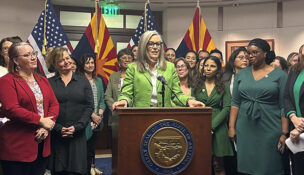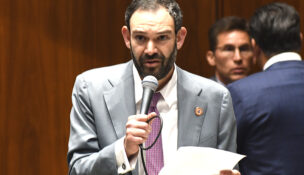Turning a blind eye≠
Arizona Capitol Reports Staff//April 25, 2008//[read_meter]
Fact Time • A magnifying mirror allows Carol Harvey – who’s visually impaired – to see her face. It’s one of a number of adaptive devices she received through DES....
No tags for this post.

















